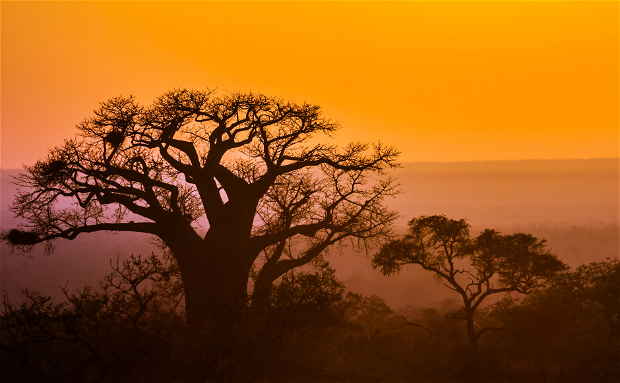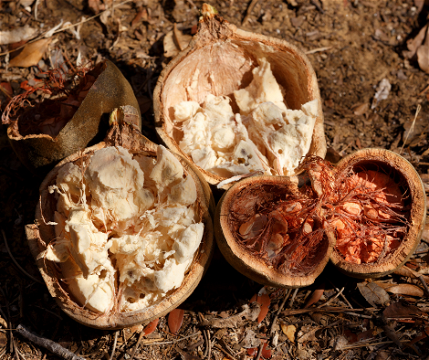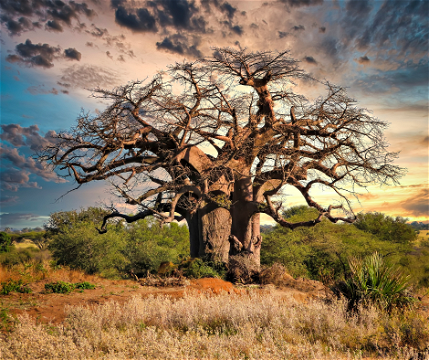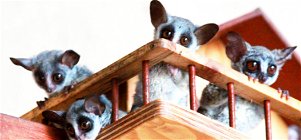Explore the fascinating role of the Mopane Tree in Africa’s savannas. From feeding elephants and Mopane Worms to its traditional medicinal uses, discover how this resilient tree supports both wildlife and local communities.
The Baobab: Africa's Iconic "Tree of Life"

The baobab tree, an African icon, symbolizes resilience and life, deeply rooted in African culture and ecosystems. Revered in folklore and vital in maintaining ecological balance, it offers shelter and sustenance to diverse species and serves as a communal hub, with its uses ranging from medicine to crafts. Eco-tourism, particularly in areas like Kruger National Park, plays a key role in its conservation, raising awareness and funds to protect this majestic tree, its biodiversity, and cultural heritage, thereby preserving its legacy for future generations.
Emerging from the sun-baked African savanna, the baobab tree stands as a testament to resilience and longevity. Revered as Africa's iconic "Tree of Life”, this majestic giant embodies the continent's untamed spirit and the delicate balance of its ecosystems. With its enormous trunk, sprawling branches, and unique upside-down appearance, the baobab has captured the imagination of people for centuries. From its roots in ancient folklore to its contemporary role in eco-tourism, the baobab is more than just a tree; it's a symbol of Africa's rich heritage and a vital component of its diverse ecosystems.
Historical Significance
The baobab's roots in African culture run deep, weaving through ancient folklore and everyday life. These towering giants have been revered for their longevity and ability to thrive in harsh environments, earning them a place of honor in African traditions. In many cultures, the baobab is considered sacred, a place of spiritual significance, and a connection to the ancestral realm. The tree's hollow trunks have served as community gathering places, makeshift shelters, and even homes.
Physical Characteristics
The baobab's distinctive silhouette is a familiar sight across the African landscape. With its bulbous trunk, reaching up to 30 meters in circumference, and its gnarled branches stretching skyward like outstretched arms, the baobab is a natural masterpiece. These deciduous trees shed their leaves during the dry season, revealing their intricate network of branches that resemble a root system reaching for the heavens. The baobab's resilience is evident in its ability to thrive in a variety of habitats, from arid savannas to lush woodlands.
Ecological Importance
The baobab is not just a visual spectacle; it plays a crucial role in maintaining the health of African ecosystems. Its hollow trunks provide shelter and nesting sites for a diverse array of creatures, from insects to birds and mammals. The tree's roots, extending deep into the ground, help to stabilise the soil and prevent erosion. During droughts, the baobab's stored water serves as a lifeline for wildlife, providing sustenance when other sources are scarce. The tree's leaves, rich in nutrients, contribute to the fertility of the soil, nurturing the growth of other plants.
Cultural and Economic Significance
The baobab is deeply intertwined with the lives of African communities. Its leaves are used as a traditional medicine to treat ailments such as fever and diarrhoea. The fruit, known as "monkey bread," is a nutritious source of vitamins and antioxidants. The tree's bark is woven into ropes, mats, and even clothing. In many villages, the baobab serves as a gathering place, a shaded haven where stories are shared and traditions are passed down.
Weird and Wonderful Facts about Baobabs
Upside-Down Appearance: The baobab's leafless branches, resembling roots reaching towards the sky, have earned it the moniker "upside-down tree."
Water Storage Champions: A single baobab tree can store up to 4,500 liters of water in its trunk, a remarkable adaptation for survival in dry environments.
Superfood Fruit: The baobab fruit is packed with nutrients, boasting six times more vitamin C than an orange, twice as much calcium as a glass of milk, and a wealth of antioxidants.
Natural Shelters: The hollow trunks of older baobab trees have served as homes, shops, prisons, and even pubs throughout history.
Longevity and Size: Baobabs are among the longest-living trees on Earth, with some estimated to be over 6,000 years old. Their massive trunks can grow large enough to house a small cafe inside.
The baobab tree is more than just an African icon; it's a symbol of resilience, life, and the interconnectedness of nature and culture. These majestic giants have stood witness to centuries of African history, providing sustenance, shelter, and spiritual guidance to communities across the continent. Their presence enriches the African landscape, adding a touch of magic and mystery to the savannas and woodlands they call home. As we strive to protect these remarkable trees, we safeguard not only a vital component of African ecosystems but also a testament to the continent's rich heritage.
Eco-Tourism Impact
Eco-tourism initiatives, such as those at Kruger National Park, play a crucial role in highlighting the baobab's significance and promoting its conservation. By incorporating baobab experiences into eco-tourism packages, tour operators attract visitors eager to learn about these remarkable trees and contribute to their protection. Eco-tourism revenue supports conservation efforts, funding research, habitat protection, and community education programs. Moreover, eco-tourism raises awareness about the baobab's ecological and cultural importance, fostering a sense of stewardship among visitors and local communities alike.
Preserving the baobab is not just about protecting a tree; it's about safeguarding the biodiversity, cultural heritage, and ecological balance of Africa. By valuing these majestic giants, we honor the continent's rich traditions and ensure that future generations can marvel at the baobab's enduring legacy.






Share This Post